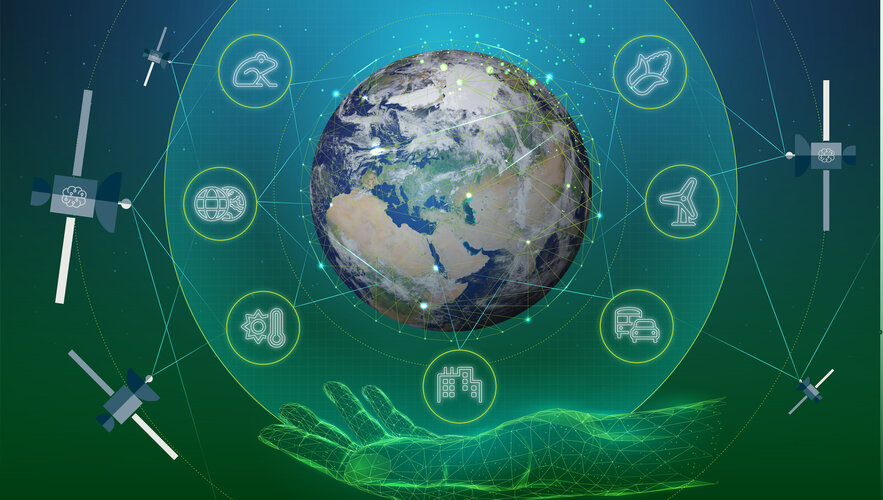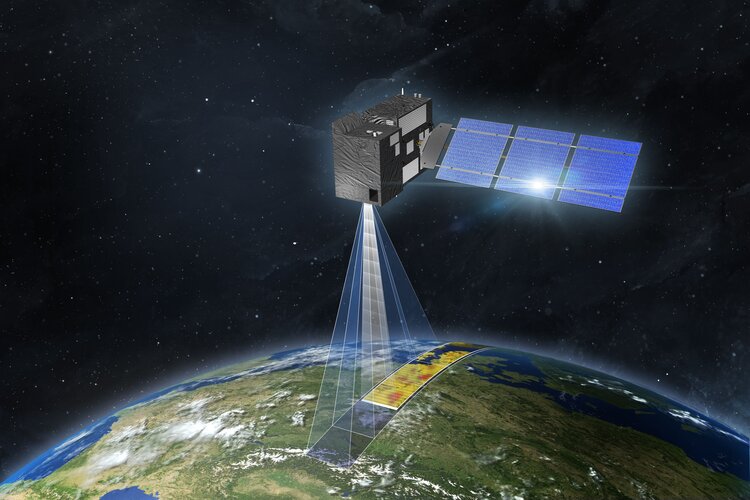
Copernical Team
Satellogic and UP42 team up to offer rapid monitoring capabilities
 Satellogic Inc. (NASDAQ: SATL), a leader in sub-meter resolution Earth Observation ("EO") data collection, has entered into an agreement with UP42, a geospatial developer platform and marketplace enabling direct access to Satellogic's satellite tasking high-resolution multispectral and wide-area hyperspectral imagery via the UP42 API-based platform. The agreement includes the archive of high-fre
Satellogic Inc. (NASDAQ: SATL), a leader in sub-meter resolution Earth Observation ("EO") data collection, has entered into an agreement with UP42, a geospatial developer platform and marketplace enabling direct access to Satellogic's satellite tasking high-resolution multispectral and wide-area hyperspectral imagery via the UP42 API-based platform. The agreement includes the archive of high-fre It’s a kind of MAGIC

With well over 4000 scientists, academics, space industry personnel, institutional stakeholders, data users, students and citizens all gathered at the Living Planet Symposium, this world-renowned Earth observation event is already proving to be a bit like magic, especially after the gruelling two-year COVID pandemic. However, there’s also another kind of magic in the air creating a buzz – no, not the band Queen singing their hit single, but a potential new satellite mission called MAGIC that would shed new light on where Earth’s water is stored and how it moves from place to place.
Accelerators gear up at ESA’s Living Planet Symposium

Global climate change is the single most challenging issue faced by humanity – affecting every region, continent and ocean on Earth. It fuels a range of other top-level challenges such as food security, migration, biodiversity loss, risks to human health and economic losses.
This week, at ESA’s Living Planet Symposium taking place in Bonn, high-level ESA representatives, along with a mix of academia and policy experts, came together to discuss ESA’s ‘Space for a Green Future Accelerator’ – a major ESA initiative aiming to accelerate the use of space in Europe.
Human's motion perception revealed by spaceflight: study
 Spaceflight, apart from exploring the unknown universe, can also help us, the inhabitants of Earth, to understand how gravity is affecting our brain in its visual perception.
Humans have evolved under the constant influence of gravity, though normally we don't notice it.
Human brains are selectively tuned to movement patterns initiated by living organisms like our peers, while turnin
Spaceflight, apart from exploring the unknown universe, can also help us, the inhabitants of Earth, to understand how gravity is affecting our brain in its visual perception.
Humans have evolved under the constant influence of gravity, though normally we don't notice it.
Human brains are selectively tuned to movement patterns initiated by living organisms like our peers, while turnin New spin on galaxy rotation saves controversial gravity theory
 An international group of astronomers, led by a physicist at the University of St Andrews, has revived an alternative gravity theory.
Headed by Dr Indranil Banik of the School of Physics and Astronomy at St Andrews, the study revealed a high predicted rotation speed of gas in a dwarf galaxy consistent with the previously debunked theory known as Milgromian Dynamics (MOND).
An earlier
An international group of astronomers, led by a physicist at the University of St Andrews, has revived an alternative gravity theory.
Headed by Dr Indranil Banik of the School of Physics and Astronomy at St Andrews, the study revealed a high predicted rotation speed of gas in a dwarf galaxy consistent with the previously debunked theory known as Milgromian Dynamics (MOND).
An earlier Navarino teams with OneWeb to extend connectivity to commercial shipping
 OneWeb, the Low Earth Orbit (LEO) satellite communications company, and Navarino, one of the world's leading maritime technology companies, has signed a Memorandum of Understanding (MoU) to become a global Distribution Partner to deliver high speed, low latency connectivity to the global commercial shipping industry.
Combining Navarino's maritime technology solutions with OneWeb's high spe
OneWeb, the Low Earth Orbit (LEO) satellite communications company, and Navarino, one of the world's leading maritime technology companies, has signed a Memorandum of Understanding (MoU) to become a global Distribution Partner to deliver high speed, low latency connectivity to the global commercial shipping industry.
Combining Navarino's maritime technology solutions with OneWeb's high spe Gogo Business Aviation to launch LEO Global Broadband service
 Gogo Business Aviation (NASDAQ: GOGO) has announced it will launch the first global broadband service in business aviation to use an electronically steered antenna (ESA) on a low earth orbit (LEO) satellite network.
Gogo's exclusive antenna assembly, designed in conjunction with Hughes Network Systems, LLC (Hughes), will be small enough for installation on the fuselage of business aircraft
Gogo Business Aviation (NASDAQ: GOGO) has announced it will launch the first global broadband service in business aviation to use an electronically steered antenna (ESA) on a low earth orbit (LEO) satellite network.
Gogo's exclusive antenna assembly, designed in conjunction with Hughes Network Systems, LLC (Hughes), will be small enough for installation on the fuselage of business aircraft Planets of binary stars as possible homes for alien life
 Nearly half of Sun-size stars are binary. According to University of Copenhagen research, planetary systems around binary stars may be very different from those around single stars. This points to new targets in the search for extraterrestrial life forms.
Since the only known planet with life, the Earth, orbits the Sun, planetary systems around stars of similar size are obvious targets for
Nearly half of Sun-size stars are binary. According to University of Copenhagen research, planetary systems around binary stars may be very different from those around single stars. This points to new targets in the search for extraterrestrial life forms.
Since the only known planet with life, the Earth, orbits the Sun, planetary systems around stars of similar size are obvious targets for Mastcam-Ing All the Things: Sols 3480-3482
 Coming into planning on Friday, we were greeted with a beautiful vista, with well preserved layering and amazing outcrops, and a reminder of just how stunning the planet Mars is. Mastcam takes a 360 degree image on a regular basis, and our last one was fairly recently, on sol 3474, but given the stunning views from here, it was suggested that we take another here if we could fit it in.
As
Coming into planning on Friday, we were greeted with a beautiful vista, with well preserved layering and amazing outcrops, and a reminder of just how stunning the planet Mars is. Mastcam takes a 360 degree image on a regular basis, and our last one was fairly recently, on sol 3474, but given the stunning views from here, it was suggested that we take another here if we could fit it in.
As Full steam ahead for carbon dioxide monitoring mission

The Copernicus Anthropogenic Carbon Dioxide Monitoring mission has taken another step forward as ESA authorises the mission’s prime contractor, OHB, to continue the development of the first satellite that will take it to being launch-ready and, in parallel, start production on the mission’s second satellite. Celebrated at ESA’s Living Planet Symposium in Bonn, this contract rider follows an initial contract that was signed in 2020.
